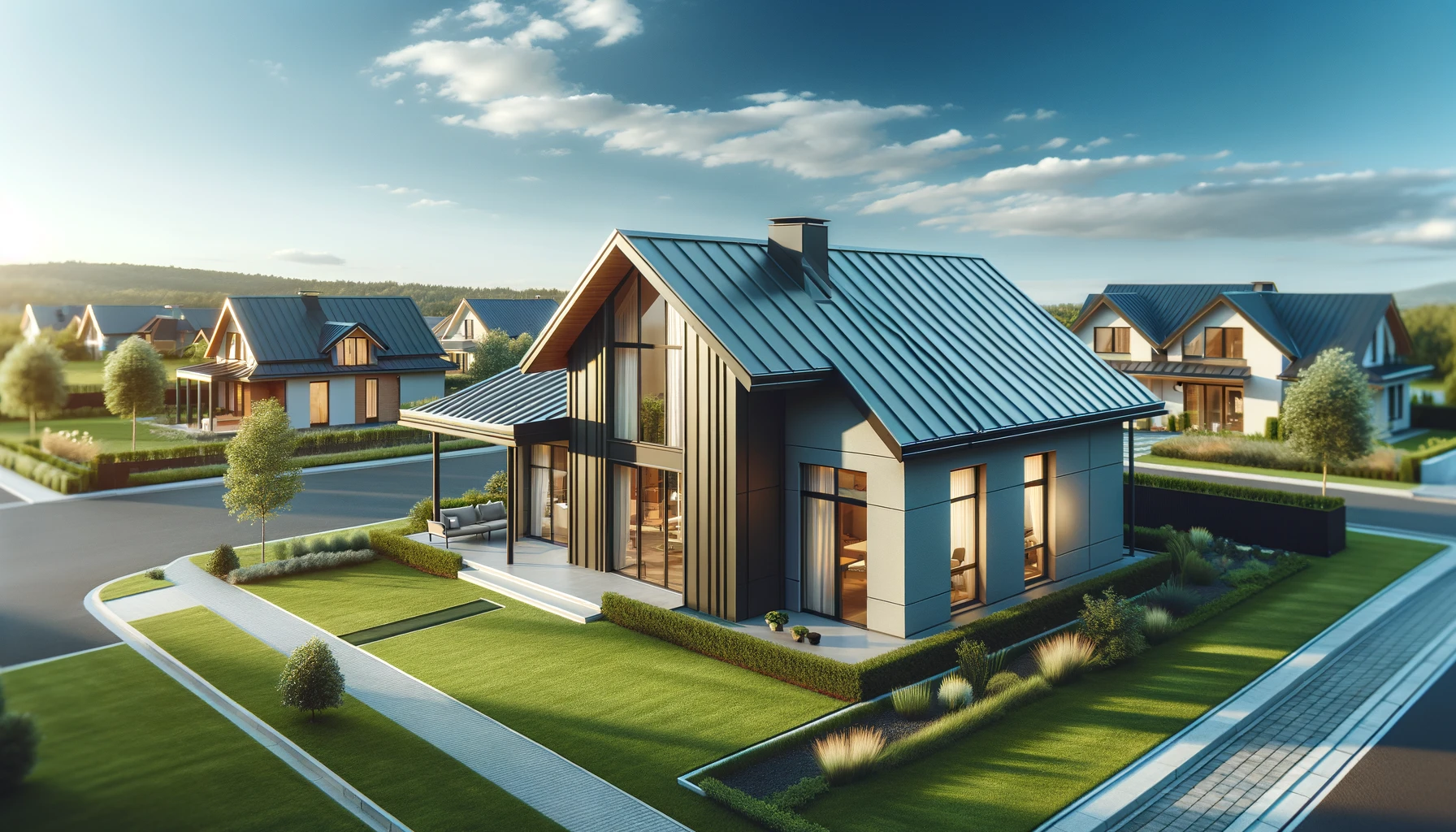In the dynamic field of architecture, sustainability paired with style has become essential. As homeowners and architects prioritize materials that blend environmental responsibility with visual appeal, metal roofing has surged in popularity. This article delves into the growing trend of metal roofing in modern architecture, emphasizing its eco-friendly advantages and versatile design options.
The Aesthetic Revolution: Modern Elegance
Metal roofing has evolved far beyond its industrial origins. Today, it is prized for its sleek, contemporary look that enhances modern architectural styles. Available in diverse formats—from standing seam panels to metal shingles that replicate classic materials like slate and wood—metal roofing provides limitless design flexibility.
Homeowners benefit from an extensive palette of colors and finishes, enabling roofs that beautifully complement any home’s style. Whether aiming for a minimalist, monochrome aesthetic or a striking, vibrant statement, metal roofing can be customized accordingly. This adaptability has made metal roofs a preferred option for residential and commercial projects alike.
Sustainability: Eco-Friendly Benefits
One of the foremost advantages of metal roofing is its commitment to sustainability. Typically constructed from recycled aluminum or steel, metal roofs are also 100% recyclable at the end of their lifespan. This significantly mitigates environmental impact, promoting a circular economy within the building industry.
Additionally, metal roofs enhance energy efficiency. Their highly reflective surfaces reduce heat absorption, helping maintain cooler indoor temperatures during summer and cutting down on air conditioning expenses. In colder seasons, pairing metal roofs with proper insulation retains indoor warmth, delivering consistent energy savings throughout the year.
Metal roofs also boast impressive longevity. With an average lifespan exceeding 50 years, they far outlast traditional asphalt shingles—which often require replacement every 15 to 20 years —thus diminishing material waste and resource consumption over time.
Durability: Built to Withstand the Elements
Renowned for exceptional durability, metal roofing withstands harsh weather conditions including intense winds, heavy snowfall, and hailstorms. It is inherently resistant to fire, rot, and insect damage, providing superior protection compared to many other roofing options.
For regions vulnerable to extreme weather, metal roofing delivers peace of mind. Its smooth surface encourages snow to slide off easily, preventing excessive weight build-up and potential roof collapse. Moreover, metal roofs do not absorb water, significantly reducing leakage risks and water damage.
Low Maintenance: Effortless Upkeep
Metal roofs offer remarkable low-maintenance advantages. Unlike traditional roofing that may require frequent repairs, treatments, or inspections, metal roofs need only occasional cleaning and periodic inspections to maintain peak condition.
This minimal upkeep appeals to busy homeowners seeking a durable, hassle-free roofing solution. The long lifespan and robustness of metal roofing translate to fewer repairs and replacements, saving significant time and expense over the roof’s lifetime.
Versatility: Ideal for Various Applications
Metal roofing transcends residential applications. Its adaptability suits commercial buildings, agricultural facilities, and cutting-edge architectural landmarks alike. Architects harness metal roofing’s flexibility to enhance diverse design approaches, from rustic farmsteads to ultra-modern urban towers.
In metropolitan areas, metal roofs often play a critical role in sustainable building initiatives. Their compatibility with solar panel installations and rainwater harvesting systems positions them at the heart of green architecture. As cities push toward eco-conscious development, the demand for metal roofing continues to surge.
Additional Insights: Why Metal Roofing Excels Today
In addition to sustainability and aesthetics, metal roofing offers excellent resistance to mold and mildew, which is essential for maintaining indoor air quality and structural integrity. Its lightweight nature reduces the stress on building foundations, often enabling easier installation and cost savings on structural support. Further, advances in coating technology have enhanced corrosion resistance and extended the lifespan of metal roofs, even in coastal and industrial environments. These innovations make metal roofing an increasingly attractive option for environmentally conscious homeowners seeking durable, efficient, and stylish roofing solutions.
Conclusion
The rise of metal roofing in modern architecture is a clear reflection of its unmatched sustainable features and versatile style options. As eco-friendly materials and innovative designs gain priority, metal roofing emerges as a top contender. Its aesthetic flexibility, durability, and low maintenance requirements make it ideal across numerous applications. Whether you’re planning a new roof installation or require roof repair in Long Island, choosing metal roofing is embracing a future-forward approach, blending sustainability with timeless style for lasting value.


